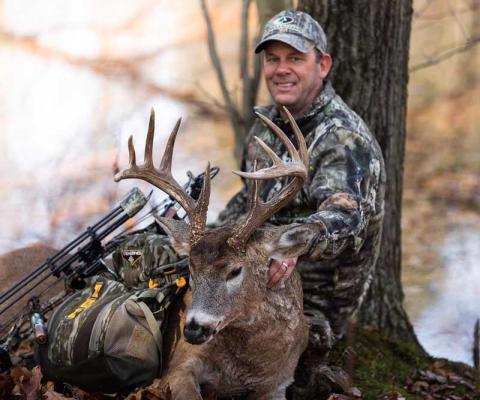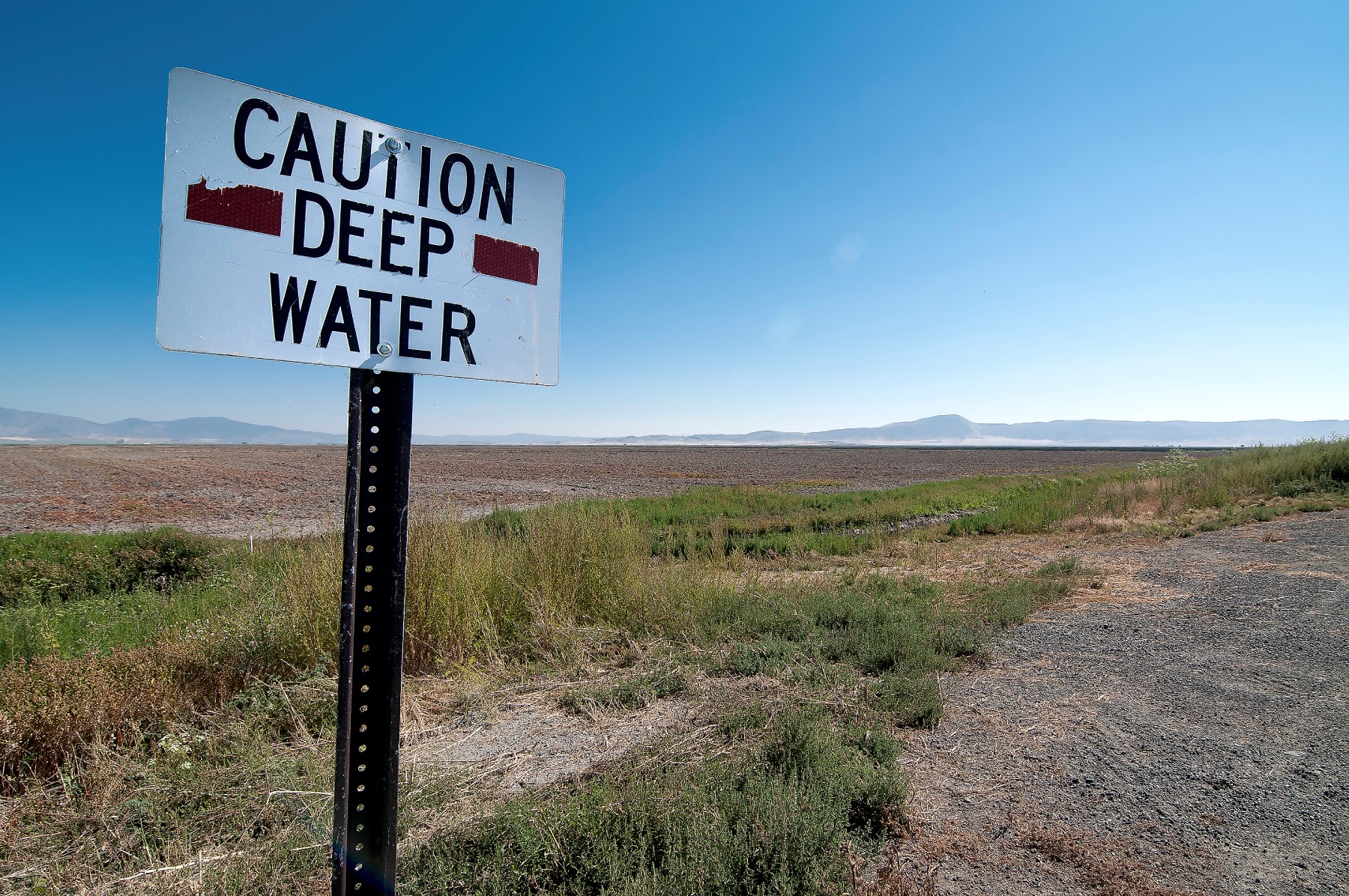
In the Klamath Basin of Oregon and California, drought and water allocation policy are leaving fish – and waterfowl – high and dry.
Written by Shawn Swearingen and Jordan Rash
The headlines last summer read the Klamath Basin (Basin) wildlife refuges - Lower Klamath and Tule Lake - were running dry for the first time in recorded history. With this year’s increase in snow pack and precipitation in the region - potentially enough to begin to replenish depleted groundwater, reservoirs, waterfowl habitats - the canals and ditches are full of water for farmers and reservoirs full for fish, yet the Bureau of Reclamation has allocated zero water to the refuge system. What may seem like a small stepping stone in the migration process, is a critical component of the Pacific Flyway affecting waterfowl populations like pintails broadly. Are policies and management in place to manage water resources to sustain waterfowl habitat and harvest in the face of a changing climate?
An Oversimplification of the Klamath Basin Needs and History
Arriving in the Klamath Basin along the southern Oregon and northern California border, European settlers saw an extensive network of high desert wetlands. Water was drained for fertile crop fields and the respective lakes of Upper Klamath, Lower Klamath and Tule used for irrigation. The moving of earth and managing of the lakes and wetlands began in 1906 as part of the Klamath Basin Project (Project). Shortly thereafter, the Lower Klamath National Wildlife Refuge with over 50,000 acres was established by President Theodore Roosevelt in 1908 as the first waterfowl refuge.
The first priority for this Project, by the federal Bureau of Reclamation (Bureau), was to drain the wetlands, with the second priority of building canals to channel water for irrigation. “Wetlands were looked at as an impediment to progress since ‘day one’ of the settlers to the area. That perspective needs to change,” said John Vradenburg, Supervisory Biologist - Klamath Basin Wildlife Refuge Complex.
The Project outlines who gets water, how much they get, when they receive it, and the priority for delivery. The process has not changed, but the acres farmed as well as the population of the basin has. Plus, the climate has changed with successive droughts placing additional stress on the system. To further complicate matters, the Shortnose and Lost River sucker fishes were listed under the Endangered Species Act in 1988 requiring water to be held back in Upper Klamath (and Lower Klamath) Lake to protect water quality and habitat.
And yet, the system continued to face declining water resources, most notably the drought in 2001/2002 caused a massive salmon die off in the Klamath River and highlighted by national media showing farmers and ranchers forcing open irrigation spigots to wet their parched lands. “The Basin has been in an exceptional drought cycle for the past 20 to 25 years,” said Vradenburg. “The wetlands drive the hydrologic cycle and influence the local climate of the basin. Wetlands are the foundation of the hydrologic cycle in the Klamath Watershed.”
The weight and importance of being the first refuge for waterfowl and the ecosystem at large is not lost on Vradenburg, “The refuge was the biggest waterbird conservation success story under President Roosevelt at that time; it was the first and largest effort towards waterbird habitat protection and set the precedent for a future refuge system. We need to make it a conservation success story of today.”
Why Isn’t The Project Working?
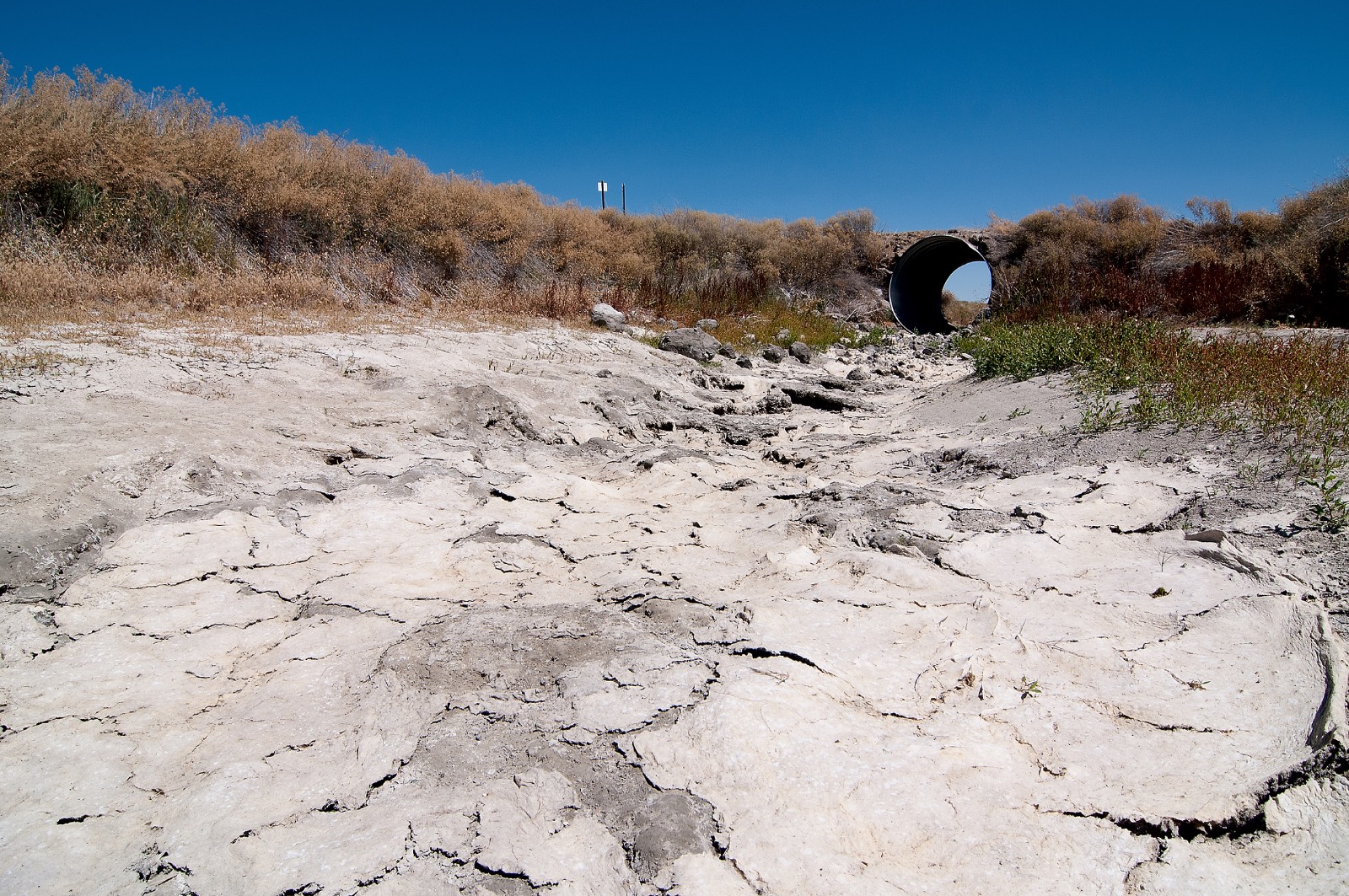
With California and much of the Pacific Northwest having a good snow base and rain, we should just put water on the refuge for the migrating birds, right? Not so fast according to the Project and governing policies. “The refuge system is at the bottom of the water inch project priority list. There is A (1, 2, 3A, 3B, 3C), B and C. The refuge is last,” says James Cameron, Physical Scientist and Hydrologist with the Bureau of Reclamation. In the order of priority, the water the refuge system receives comes from farmers and agricultural fields.
The refuge system benefits from the surrounding agriculture by utilizing outflows from fields to flood wetland areas. To flood some portions of the refuge, the United States Fish and Wildlife Service (USFWS) uses pumps to move water uphill. However, according to Cameron, “Electrical costs have risen as much as 3,000 times causing the price to be roughly $1 million a year to pump the same amount of water.” This is a heavy financial burden on an irrigation district responsible for the cost of pumping water.
Vradenburg stated that, “2020 was a pivotal year; it's when the drought really hit home. In 2021 there was only one wetland and in 2022 no wetlands in either refuge had water and thus, there were no birds on either Lower Klamath or Tule Lake.”
According to data from tracking surveys by the United States Geological Surveys (USGS), fewer migratory birds have been utilizing the Klamath Basin wetlands over the past few decades; all of this resulting in the refuge system being used only 25% of average. Historically, habitats in the Klamath Basin were more resilient during the spring than the fall, but now the USGS is witnessing evidence of lower use of the Basin during both seasons. For example, some species like snow geese have dramatically changed their patterns of use with USGS reporting virtually no use of the Klamath Basin in the fall and only limited use in the spring.
“When Tule Lake was diked and levees added, its wetland cycle stopped; it has been in a decline ever since,” says Vradenburg. “Sediment filling into Tule Lake has caused an elevation change within the lake and disrupted the natural flows. Meanwhile, the Lower Klamath wetland cycle naturally operates on an eight to twelve year rotation and has been carrying the weight while a majority of other wetland systems have been in decline.”
“We have a historical wet system that was very resilient; but, there wasn’t foresight with the new needs being placed when the Project was designed. This has placed us in an unique and unfortunate paradigm,” states Vradenburg. “In 2001, it became clear that water resources had been stretched too thin and were limited due to the competing demands. When you manage water for discrete end use you are managing for consumption, whereas when you manage water using ecological/natural hydraulic processes you are managing for resilient, sustainable water supply.”
What is Being Done Now?
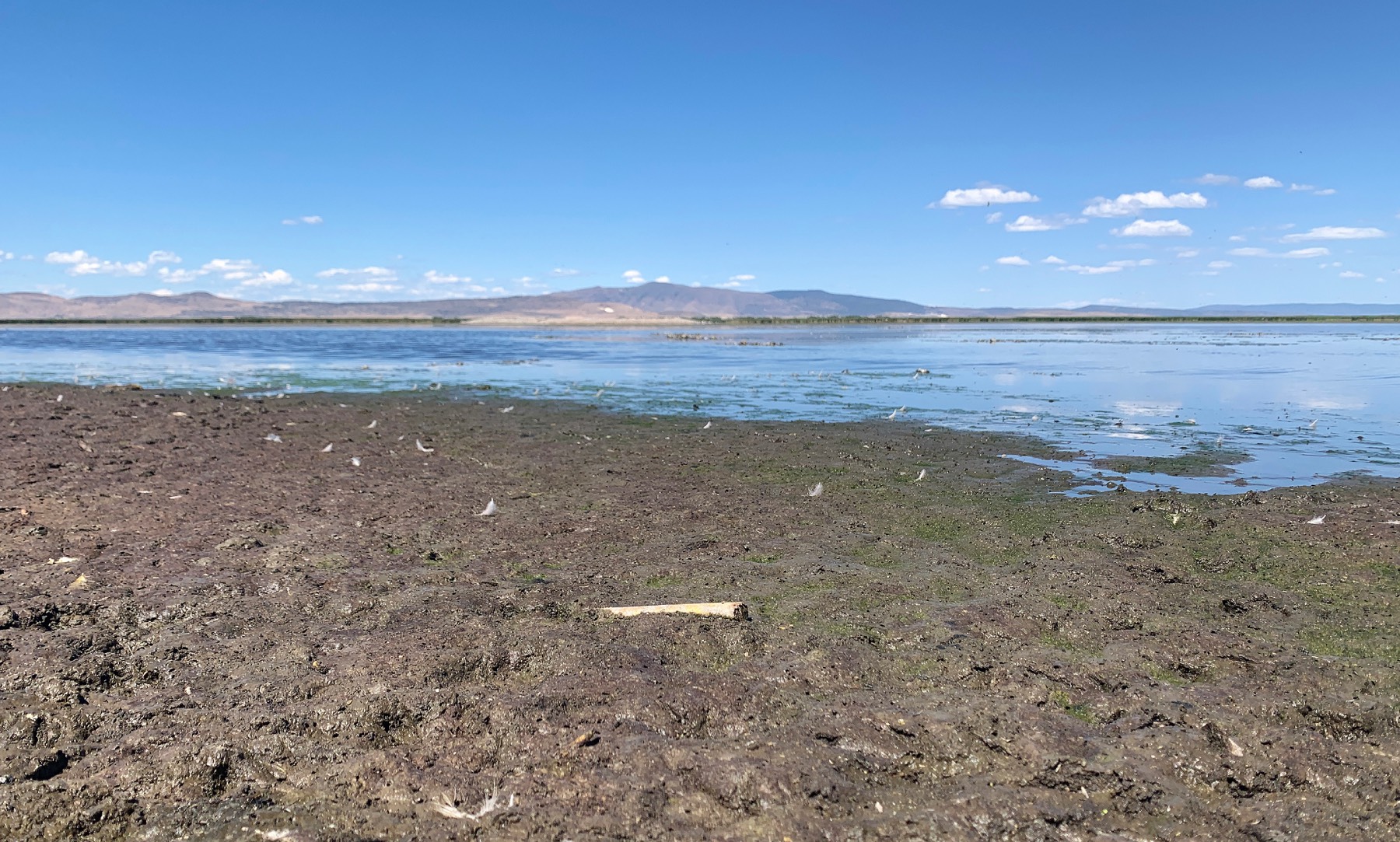
Work has been done to the refuge system during this extraordinary drought period, enabling the USFWS to do a number of projects. According to Vradenburg, “With the silt and sediment in Tule Lake for example, we were able remove it along with restoring some of the historical flow patterns and aeration of water.” All of this work is critical to make areas wet again, as effective and important mid-continent, critical water stop overs for migratory birds.
“Across the board, we’ve been able to reconstruct levees, upgrade water control structures and restore flow paths. All of this also helps control invasive species, plus reduce maintenance costs in the long term. What we are realizing is we need to improve wetland habitat to support the recovery of endangered fish species and in doing so we are improving conditions for waterfowl, water supplies, fish and more,” says Vradenburg.
“Submerged aquatic vegetation is the key and foundation of the food web at Tule Lake NWR and this has been degrading for over 70 years as result of wetland stabilization. Once it is wet again we should see a spectacular response to it from that vegetation and the waterfowl population,” stated Vradenburg.
Even with the on-the-ground work being done by the USFWS, the Bureau has a priority scheme that is not clear across regulatory agencies. What more can be done?
Changing Opinions & Water For Sale
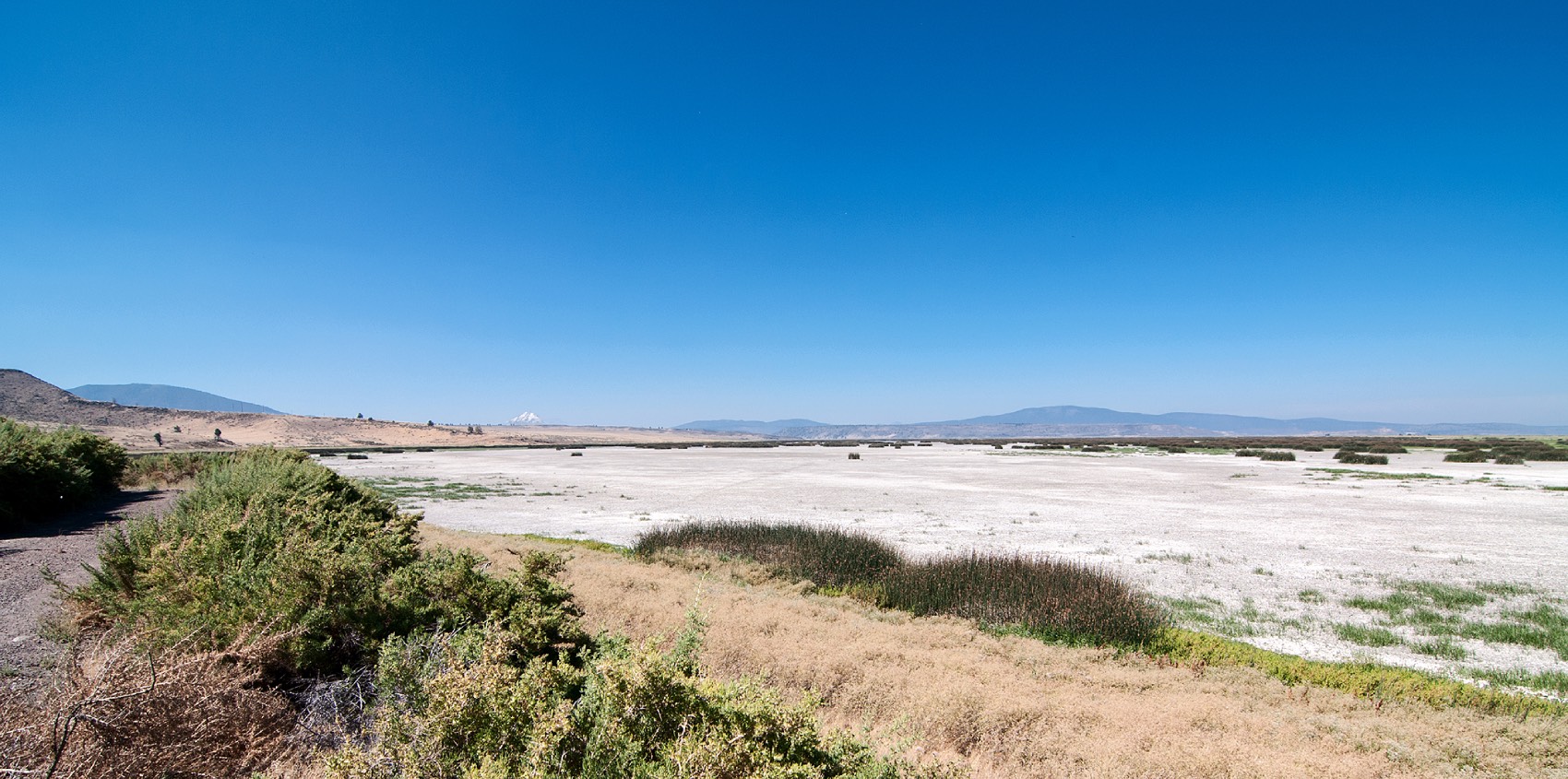
The actions of refuge managers are constricted by policies in place by the respective Oregon and California state agencies along with the Project as operated by the Bureau. “The big thing is getting the ecological and hydrologic benefits wetlands in the refuge system provide, recognized through state and federal policies. We need to support the hydrology of the region,” said Vradenburg.
It is clear that water needs to be moved to Lower Klamath and Tule Lake, and not just for the birds and downstream fish, but to help with groundwater recharge. But the current management regime clearly isn’t working. Biological opinions are issued by NOAA (marine impacts) and the USFWS (non-marine impacts) to ensure the Bureau operations, maintenance, and rehabilitation projects complies with the Endangered Species Act. Policies need to be adjusted to utilize the refuge system to be part of these biological opinions, and seen simply as infrastructure for water storage.
“As a community and caretakers, we need to use the system the way it was designed to be used. However, we are limited in resources and the water management priorities,” said Vradenburg. “The USFWS owns the majority of remaining wetland area in the basin and that needs to be leveraged to increase water security, species recovery, and water supply for both natural flow and irrigation. Wetlands are not a water loss, they are the foundation of water security. ”
Jim Waldo, who is a resident of Washington State, is a natural resources mediator. He has worked on water, energy, agricultural and fisheries issues on the West Coast of North America, and a mediator on water issues in California. “There are different types of water rights and different ways in how they can be used (e.g., surface, ground, or either source; limitations on time of year; date the right was created; etc.). As an example there are large agricultural water districts that have junior water rights and during the last multi-year droughts received little or no surface water from the Bureau of Reclamation. This has necessitated purchasing water from other areas, using additional groundwater and retiring lands from agricultural use. Their future will be quite different from their past.”
According to Jim Waldo, depending on the geology, underground water banks could be a part of a solution package, in addition to the opportunities in Lower Klamath and Tule Lake. In a previous project, Waldo worked to help establish the Kern County Water Bank in the Bakersfield area. This has become a model for similar water banks in the Central Valley of California. This water bank now provides ground water storage for dry years and is a major stop for birds on the Pacific Flyway. This required turning what had been a problem - declining groundwater tables - into an asset. It also required new arrangements on how to get water from various sources and have it transported to the water bank for storage. Water banks have also played a key role in taking winter high flow waters during a time that is not needed for cities, agriculture, or the environment and storing it until there is a high-value use in the late summer and early fall. “One of the pieces of creating a new water mosaic for the future ties into the purchase exchange or leasing of water rights. These rights can be left in the ground or in-stream for beneficial use. They could also be transferred (e.g., from in-stream to a water bank),” said Waldo.
The California Waterfowl Association (CWA) has recently been going through the process to acquire water rights as well to assist in supplementing water to Lower Klamath and Tule Lake refuges. John Carlson, President of CWA said, “We are witnessing the slow death of our nation’s first waterfowl refuge and the wildlife and economy that rely on it. Fundamental changes in policy, creative solutions, leadership and compromise will be essential to striking the right balance benefitting all economic and wildlife interests. The question is: will changes be implemented in time?”
As Vradenburg said, “If the sporting interests, environmentalists, tribes, and agriculture can agree that wetlands are ecologically significant to the culture and environment, it doesn’t matter what drew us there. It's doing something good that benefits the community as a whole. ”
“We need to align farmer, hunter, tribal, fishery, refuge, and the community interests to change things - no one is happy with the current situation,” agrees Waldo.
We cannot keep bad policy on the books. We can’t not utilize the ecological system in place with sound hydraulic management for the benefit of migratory birds, salmon, the Shortnose suckers and farmers. As long-time resident and farmer Karl Wenner said, “You can fix this. This is the place to do landscape scale restoration. If we can’t get it done here, it can’t be done anywhere.”
Current resource management and policy creates polarization leaving no one happy with the outcome: not enough water for any of the needs. Including wetlands and refuges in biological opinions would help all users, but that won’t happen without proactive efforts by affected governments and area stakeholders. The refuge system is a unique opportunity to be part of the solution but it will take trust and compromise to move water to Lower Klamath and Tule Lake. Keeping on the same path now would only put a tragic end on what was the start of a great conservation success story over 100 years ago.














